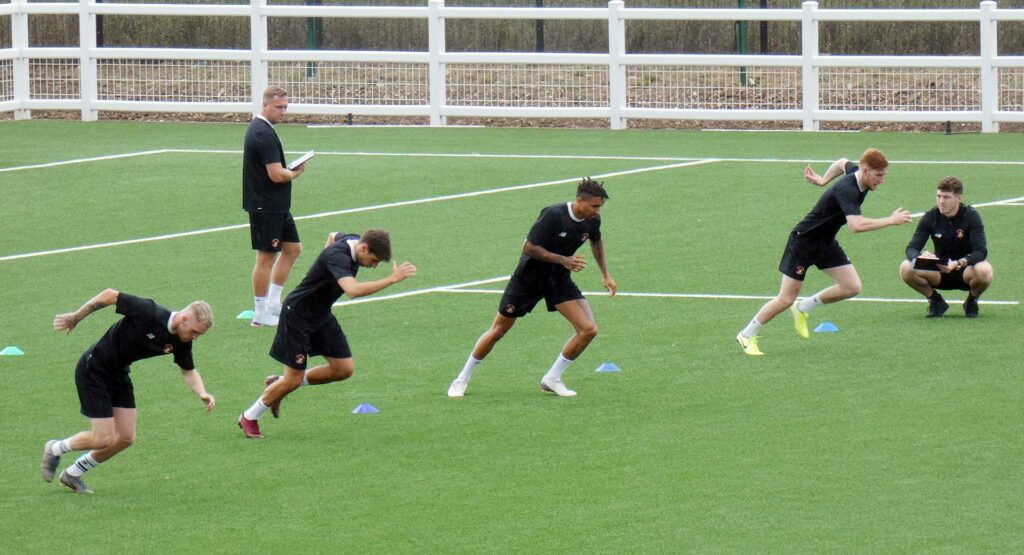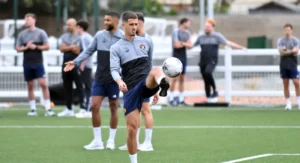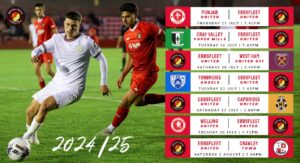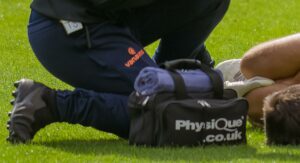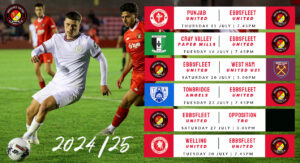Ebbsfleet United’s squad reported for duty first thing on Monday morning and were put through their paces on the training ground mere hours into their opening day.
Fleet’s Head of Performance Lee Taylor put the players through a series of short, high-intensity sessions across three hours, with the squad’s new GPS trackers enabling live analysis of their performance.
“We’ve got loads of work to do but we’ve set the stall out now, the players know what to expect,” LT told the club website. “This is a professional football club, and our values and everything that I bring to the table [reflect that] and especially the manager – the manager is sports-science mad which is great for me. He understands it and he just gets it. We’re lucky with our first-team coach as well, he’s also a sports scientist. We’re all UEFA coaches and we’ve all got a sports science background, me in physiotherapy as well, so it works.
“The players have come in, I would say 90%. I’m never going to be 100% happy but it was just about driving them as hard as we can really. One or two of them have done that before but most of them have said it was one of the hardest things they’ve ever done.”

Using the GPS system with software including Polar Flow analysis (see above) enabled LT, together with students from the University of Kent and our new performance interns Freddie Woolven and Russell Trundle, to record performance to measure against the squad goals for fitness in this pre-season period.

“I can’t speak highly enough of the [interns] and University of Kent,” said LT. “They were awesome. We’ve got the state-of-the-art, pound for pound best GPS and heart-rate diagnostic system in the world at Ebbsfleet United Football Club. We’re going to make this Premier League standard and everything we’ve done so far, the chairman has backed us, myself and the gaffer, and he’s let us get on with it. The boys came in today and it was, like, wow… this is unbelievable. This is better than League One/Two clubs.
“Today was a series of tests and it’s weird, but within that three hours they probably did about 17 minutes worth of work but that’s all high-intensity. There was an agility test, there were max power tests, there were strength and muscular tests.
“There’s a lot of running, jumping, twisting and turning. The balls come out tomorrow and they’ll be doing a bit more running, all of that is scientifically based around four to six minutes – they’ve done the boring stuff away from the club and we can come in and work with the balls.
“All our running is done with balls, it’s not like the old days where we had to go and run in sand dunes. It doesn’t work like that anymore, we want to try and keep our injury levels and soft-tissue problems down so we have injury prevention plans in place, which we do on a daily basis. And really, truly, it’s about just managing their loads.”
“They’re going to be working hard on the pitch, the boys: they’ve got two sessions tomorrow. They’re in the gym in the morning with me and then we’re on the grass in the afternoon, but other than that – watch this space!”
